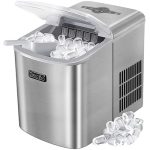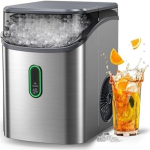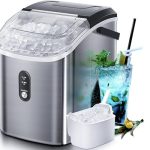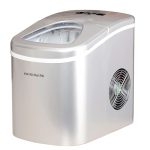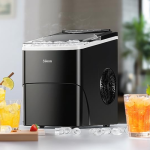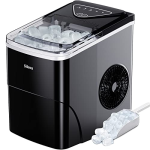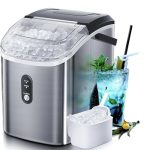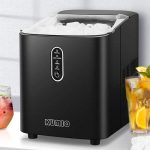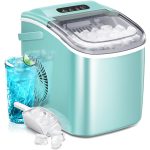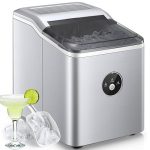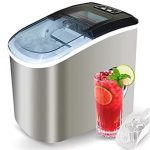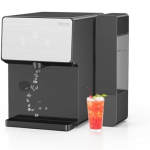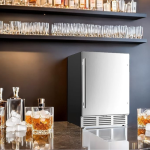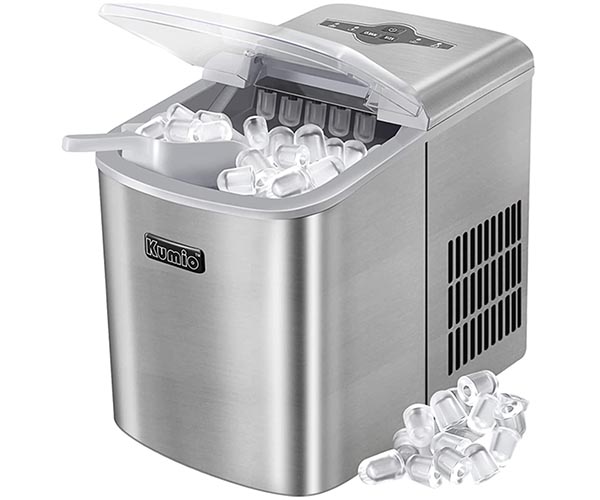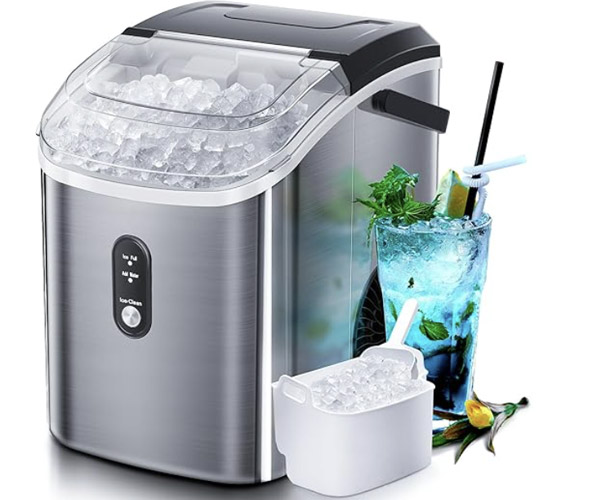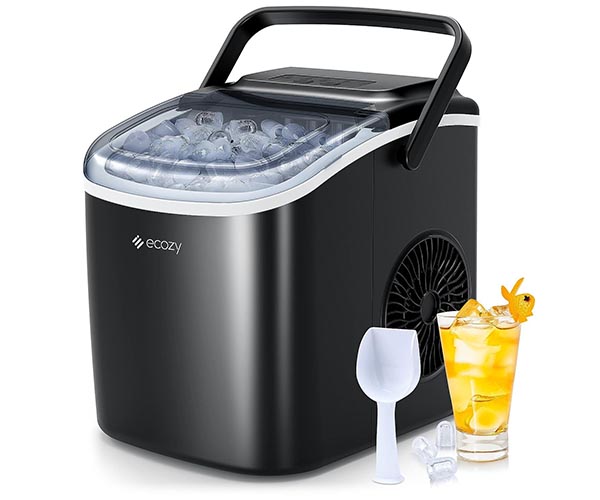Introduction
Portable power solutions have become increasingly popular in recent years, offering unparalleled flexibility and convenience for a variety of applications. From camping trips and outdoor events to emergency power outages, portable power sources such as generators, battery packs, and portable power stations have revolutionized how we access and utilize electricity on the go. This growing trend reflects a desire for greater mobility and independence from fixed power sources, making it possible to enjoy modern conveniences anywhere, anytime. https://amzn.to/3WoePQf
Increasing Popularity of Portable Power Solutions
- Versatility: Portable power sources can be used in numerous situations, from providing backup power during outages to enabling outdoor activities that require electricity.
- Advancements in Technology: Innovations in battery technology and power management have made portable power solutions more efficient, reliable, and compact, enhancing their appeal.
- Eco-Friendly Options: With the rise of solar-powered generators and environmentally friendly battery packs, consumers have more sustainable choices for their portable power needs.
Focus on Powering Countertop Ice Makers
- Meeting Modern Needs: Countertop ice makers are a prime example of appliances that benefit from portable power solutions. These devices, known for their ability to produce ice quickly and efficiently, are now more versatile than ever when paired with portable power sources.
- Enhanced Usability: Whether at an outdoor party, a camping site, or a remote location without access to a traditional power grid, portable power sources allow users to enjoy the convenience of fresh ice wherever they are. This adaptability not only enhances the utility of countertop ice makers but also expands their potential uses beyond the confines of indoor settings.
- Energy Management: Understanding how to power countertop ice makers with portable sources involves exploring the mechanics of these devices and the specific power requirements they entail. This knowledge is crucial for ensuring seamless operation and maximizing the efficiency of both the ice maker and the portable power source.
As we delve deeper into the specifics of using portable power with countertop ice makers, we will explore the types of portable power sources available, their compatibility with ice makers, and the benefits they offer. This focus will provide a comprehensive guide for anyone looking to enhance their ice-making capabilities with the flexibility and convenience of portable power.

Understanding Countertop Ice Makers
Countertop ice makers are compact, efficient appliances designed to produce ice quickly and conveniently. Understanding their basic mechanics and power requirements is essential for effectively pairing them with portable power sources.
Basic Mechanics
- Water Filling: The process begins when water is added to the reservoir. The water is then pumped into the ice-making chamber.
- Freezing Cycle: Within the chamber, water is spread over metal prongs or a freezing plate. The machine’s compressor circulates refrigerant to cool these metal components, causing the water to freeze rapidly into ice.
- Harvesting Ice: Once the ice has formed, a slight heating element warms the prongs or plate just enough to release the ice cubes into a storage bin. This cycle repeats as long as the machine is running and there is water available.
- Continuous Operation: Countertop ice makers typically operate continuously, producing a fresh batch of ice every 7-15 minutes, depending on the model.
Power Requirements
- Wattage: Most countertop ice makers require between 100 to 200 watts of power to operate. This includes the power needed for the compressor, water pump, and heating element during the ice release process.
- Voltage: These machines generally operate on a standard 110-120V household electrical supply. Ensuring that the power source can provide this voltage consistently is crucial for optimal performance.
- Energy Consumption: The energy consumption of countertop ice makers varies based on their size, production capacity, and efficiency. On average, a typical unit may consume approximately 1.5-2 kWh over 24 hours of continuous operation.
- Startup Surge: It’s important to note that these machines may have a higher startup surge when the compressor kicks in. Ensuring that the portable power source can handle this surge is essential for seamless operation.
By understanding the basic mechanics and power requirements of countertop ice makers, users can better plan for their energy needs, especially when using portable power sources. This knowledge helps in selecting the appropriate power source and ensuring that the ice maker operates efficiently, providing a steady supply of ice wherever it is needed.
Types of Portable Power Sources
To effectively power countertop ice makers on the go, various portable power sources can be utilized, each with its own advantages and considerations. Two primary options include portable generators and high-capacity battery packs or power stations.
Portable Generators
- Overview: Portable generators are a reliable option for powering countertop ice makers, especially in outdoor settings or during power outages. These devices convert fuel, typically gasoline, propane, or diesel, into electrical power.
- Advantages: Generators can provide a continuous and substantial power supply, making them suitable for running ice makers and other high-energy appliances simultaneously. They are particularly useful in remote locations where access to the electrical grid is unavailable.
- Considerations: When using portable generators, it’s important to ensure they are properly ventilated to prevent carbon monoxide buildup. Additionally, noise levels can be a factor, so choosing a generator with a lower decibel rating or using noise-reduction measures can enhance the user experience.
Battery Packs and Power Stations
- High-Capacity Battery Packs: These are portable, rechargeable units that store electrical energy for later use. They are an excellent choice for shorter durations or when quiet, emission-free power is needed.
- Portable Power Stations: These devices combine a high-capacity battery with an inverter to provide AC power, making them versatile and user-friendly. They often feature multiple outlets, including USB ports, and can be recharged via solar panels, wall outlets, or car chargers.
- Advantages: Battery packs and power stations are silent and produce no emissions, making them ideal for indoor use or in environments where noise and fumes would be disruptive. They are also easy to transport and set up, providing a convenient power solution for countertop ice makers.
- Considerations: The primary limitation of battery packs and power stations is their finite energy capacity. It’s crucial to calculate the ice maker’s power consumption and match it with a battery pack that can provide sufficient power for the desired duration. Recharging times and methods should also be considered to ensure continuous operation.
By choosing the right portable power source, users can enjoy the flexibility and convenience of using countertop ice makers in a variety of settings. Whether opting for the robust power of a generator or the quiet efficiency of a battery pack or power station, understanding the strengths and limitations of each option helps ensure a seamless and efficient ice-making experience.
Connecting Ice Makers to Portable Power
To successfully use portable power sources with countertop ice makers, it’s essential to ensure compatibility and follow proper setup procedures. Additionally, adhering to safety guidelines is crucial to prevent accidents and maintain the efficiency of both the ice maker and the power source.
Compatibility and Setup
- Check Power Ratings: Before connecting your ice maker to a portable power source, verify that the power output of the generator or battery pack matches the ice maker’s requirements. Ensure the voltage and wattage are compatible to avoid damage to the appliance.
- Use Proper Cables: Utilize heavy-duty extension cords or power cables that can handle the current required by the ice maker. Avoid using cables that are too long or of inadequate gauge, as they can cause voltage drops and overheating.
- Set Up in a Safe Location: Place the portable power source on a stable, flat surface away from flammable materials and in a well-ventilated area. For generators, this setup is crucial to prevent carbon monoxide buildup and ensure adequate airflow.
- Initial Testing: Perform an initial test run by connecting the ice maker to the power source and observing its performance. Ensure that the ice maker operates smoothly without tripping the power source or experiencing any interruptions. https://amzn.to/3WoePQf
Safety Considerations
- Avoid Overloading: Do not overload the portable power source by connecting too many appliances simultaneously. Calculate the total power draw to ensure it does not exceed the power source’s capacity.
- Monitor for Overheating: Regularly check both the ice maker and the portable power source for signs of overheating. If either device becomes excessively hot, turn them off immediately and allow them to cool before resuming operation.
- Protect from Weather: If using the ice maker and power source outdoors, protect them from rain, snow, and extreme temperatures. Use weatherproof covers and place them under a shelter if possible.
- Regular Maintenance: Maintain both the ice maker and the portable power source according to the manufacturers’ recommendations. Regularly inspect and clean components to ensure optimal performance and longevity.
- Emergency Shutoff: Familiarize yourself with the emergency shutoff procedures for both the ice maker and the portable power source. In case of a malfunction or safety concern, knowing how to quickly disconnect power can prevent further issues.
By following these compatibility and safety guidelines, users can effectively and safely connect their countertop ice makers to portable power sources. This setup ensures that the ice maker operates efficiently, providing a reliable supply of ice in various settings without compromising safety or performance.
Benefits of Using Portable Power Sources
Utilizing portable power sources for countertop ice makers offers numerous advantages, significantly enhancing their usability in various settings. The flexibility and mobility provided by these power solutions, combined with their energy efficiency, make them an excellent choice for both recreational and emergency uses.
Flexibility and Mobility
- Versatile Use Cases: Portable power sources allow countertop ice makers to be used in diverse environments, from outdoor events like picnics and barbecues to remote locations such as campsites and boats. This flexibility ensures that users can enjoy fresh ice wherever they go, without being tethered to a fixed power source.
- Convenient Portability: Portable generators, battery packs, and power stations are designed to be lightweight and easy to transport. Their compact size means they can be easily packed and moved to different locations, providing a reliable power supply for ice makers in any setting.
- Independence from the Grid: With portable power sources, users are not reliant on the availability of electrical outlets. This independence is particularly valuable in scenarios where grid power is unavailable or unreliable, such as during outdoor adventures or in regions prone to power outages.
Energy Efficiency
- Optimized Power Use: Modern portable power sources, especially those with advanced battery technology, are designed to maximize energy efficiency. They provide stable and consistent power output, ensuring that the ice maker operates efficiently without unnecessary energy waste.
- Eco-Friendly Options: Many portable power solutions, such as solar-powered generators and rechargeable battery packs, offer environmentally friendly alternatives to traditional fuel-powered generators. These options reduce the carbon footprint and provide a sustainable way to power appliances like ice makers.
- Cost Savings: By using portable power sources, especially in conjunction with renewable energy options like solar panels, users can reduce their dependence on traditional electricity and save on energy costs. Over time, the investment in portable power can lead to significant financial savings.
By leveraging the flexibility and energy efficiency of portable power sources, users can enhance the functionality of their countertop ice makers, making them a versatile and sustainable solution for a wide range of applications. Whether for leisure, work, or emergency preparedness, the combination of portable power and countertop ice makers provides unmatched convenience and reliability.
Maintenance and Care
Proper maintenance and care for both the countertop ice maker and the portable power source are crucial to ensure optimal performance and longevity. By following routine maintenance tips and knowing how to troubleshoot common issues, users can maintain efficient operation and prevent unexpected problems.
Routine Maintenance Tips
- Ice Maker Maintenance:
- Regular Cleaning: Clean the ice maker regularly to prevent mold, bacteria, and mineral buildup. Follow the manufacturer’s guidelines for cleaning the water reservoir, ice bin, and internal components.
- Descaling: Descale the ice maker every 3-6 months, depending on water hardness, to remove mineral deposits that can affect performance. Use a commercial descaling solution or a mixture of vinegar and water.
- Filter Replacement: If the ice maker has a water filter, replace it according to the manufacturer’s recommendations, typically every six months. This ensures the water used is clean and free from impurities.
- Inspect for Wear: Regularly check the machine for signs of wear and tear, such as cracks or leaks in the water lines and seals. Replace any damaged parts promptly to avoid further issues.
- Portable Power Source Maintenance:
- Battery Care: For battery packs and power stations, ensure they are charged regularly and not left in a fully depleted state for extended periods. Store them in a cool, dry place when not in use.
- Generator Maintenance: For portable generators, perform regular oil changes, air filter checks, and spark plug inspections as per the manufacturer’s maintenance schedule. Run the generator periodically to keep it in good working condition.
- Ventilation and Cleanliness: Keep the power source free from dust and debris, and ensure proper ventilation to prevent overheating. Clean the vents and cooling fans regularly.
Troubleshooting Common Issues
- Ice Maker Not Turning On: If the ice maker does not power on, check the connection to the portable power source. Ensure that the power source is charged or has sufficient fuel, and verify that the cables are securely connected.
- Inconsistent Ice Production: If the ice maker produces ice inconsistently, ensure that the power supply is stable and sufficient for the machine’s needs. Fluctuating power can affect performance, so using a power source with consistent output is essential.
- Overheating: Both the ice maker and the portable power source can overheat if not properly ventilated. Ensure that there is adequate space around both devices for airflow and that they are not exposed to direct sunlight or high temperatures.
- Low Battery Warning: If using a battery pack or power station, monitor the battery levels to prevent unexpected shutdowns. Recharge the power source as needed and consider having a backup power option available.
- Generator Issues: For generators, ensure that there is sufficient fuel and that the generator is placed on a stable, level surface. Check for any obstructions in the fuel line or air intake that could impact performance.
By adhering to these maintenance tips and being prepared to troubleshoot common issues, users can ensure that their countertop ice makers and portable power sources operate efficiently and reliably. Regular care and prompt attention to problems not only enhance performance but also extend the lifespan of these valuable appliances.
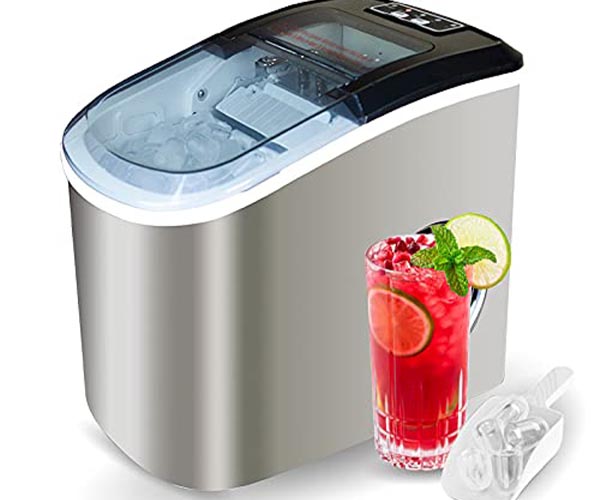
FAQs about How do countertop ice makers work with portable power sources?
1.Can you run a countertop ice maker on a portable generator?
- Yes, you can run a countertop ice maker on a portable generator. Ensure the generator provides the required wattage and voltage (typically 100-200 watts and 110-120V) for the ice maker. Use a generator with a stable power output to avoid fluctuations that could damage the appliance.
2.What portable power sources are best for countertop ice makers?
- The best portable power sources for countertop ice makers include high-capacity battery packs, portable power stations, and portable generators. Choose a power source that matches the ice maker’s power requirements and offers sufficient capacity for the duration of use.
3.How long can a battery pack run a countertop ice maker?
- The runtime of a battery pack depends on its capacity (measured in watt-hours) and the power consumption of the ice maker. For example, a 500Wh battery pack can run a 100-watt ice maker for approximately 5 hours. Always calculate based on the specific power usage of your ice maker and the battery’s capacity.
4.Are portable power stations suitable for outdoor use with ice makers?
- Yes, portable power stations are ideal for outdoor use with ice makers. They are quiet, emission-free, and easy to transport. Ensure the power station has enough capacity to run the ice maker and recharge it as needed using solar panels or other available methods.
5.How do I connect a countertop ice maker to a portable power source?
- To connect a countertop ice maker to a portable power source, use an appropriate extension cord or power cable. Ensure the power source provides the correct voltage and wattage. Follow the manufacturer’s guidelines for both the ice maker and the power source to ensure safe and efficient operation.
6.What are the benefits of using portable power with countertop ice makers?
- The benefits include flexibility, as you can use the ice maker in various settings without relying on fixed power sources. Portable power sources are also convenient for outdoor events, camping, and emergencies. Additionally, they can be energy-efficient and eco-friendly, especially when using rechargeable battery packs or solar-powered generators.
Conclusion
Using portable power sources with countertop ice makers offers numerous advantages, making it a practical and flexible solution for a wide range of scenarios. By combining these two technologies, users can enjoy the convenience of having fresh ice on demand, regardless of their location or access to traditional power sources.
- Flexibility and Mobility: Portable power sources provide the freedom to use countertop ice makers in various settings, from outdoor events and camping trips to emergency situations. This mobility ensures that you always have access to ice, enhancing your overall experience and convenience.
- Energy Efficiency: Many portable power solutions, such as high-capacity battery packs and solar-powered generators, are designed to be energy-efficient and environmentally friendly. These options help reduce your carbon footprint while providing a reliable power source for your ice maker.
- Enhanced Usability: The ability to use ice makers with portable power sources expands their functionality beyond indoor settings. Whether you’re hosting a backyard barbecue or spending a weekend in the great outdoors, portable power ensures that your ice maker can keep up with your needs.
- Cost-Effective: Investing in a portable power source can lead to long-term savings, particularly when using renewable energy options like solar power. Additionally, the reduced dependence on grid power can lower your overall energy costs.
Considering these benefits, it is clear that using portable power sources with countertop ice makers is a smart and versatile choice. This setup not only enhances the usability of your ice maker but also provides a reliable and efficient power solution that adapts to your lifestyle. I encourage you to explore the various portable power options available and consider integrating them with your countertop ice maker for a more flexible and convenient ice-making experience.
Call to Action
As you reflect on the benefits of using portable power sources with countertop ice makers, take the next step by assessing your specific needs for portable power solutions. Whether you frequently host outdoor events, enjoy camping trips, or simply want a reliable backup power source, upgrading your setup can provide significant advantages in terms of convenience and efficiency.
- Evaluate Your Requirements: Consider your typical ice usage and the environments where you need portable power. Determine the capacity and features that will best meet your needs, such as battery life, recharge options, and portability.
- Explore Options: Visit local stores or browse online platforms to explore the latest models of countertop ice makers and portable power sources. Look for demonstrations or product videos that showcase how these devices work together, providing you with a clearer understanding of their functionality and benefits.
- Read Reviews and Compare: Check customer reviews and product comparisons to identify the best options available. Pay attention to factors like energy efficiency, ease of use, and overall performance to make an informed decision.
- Purchase with Confidence: Once you have identified the ideal ice maker and portable power source, proceed with your purchase. Many online retailers offer detailed specifications and user guides to help you set up and maximize the efficiency of your new equipment. https://amzn.to/3WoePQf
By upgrading to a setup that includes both a countertop ice maker and a portable power source, you can enjoy the flexibility and convenience of having fresh ice anytime, anywhere. Start exploring your options today and make a smart investment that enhances your lifestyle and meets your portable power needs.
References
- GE Profile Opal Nugget Ice Maker Product Page
- NewAir Countertop Ice Maker Product Page
- Igloo ICEB26HNBK Portable Electric Countertop Ice Maker Product Page
- Scotsman SCN60PA-1SS
- EUHOMY Nugget Ice Maker Countertop
- Silonn Ice Maker Countertop
Additional Resources
- [How often should you clean your countertop ice maker?]
- [What happens if you don’t clean your countertop ice maker regularly?]
- [How does a countertop ice maker work?]
- [How to install a countertop ice maker?]
- [How often to descale a countertop ice maker?]
- [Buying Guide: Countertop Ice Makers with Water Line Connection]
- [Kitchen Upgrade Ideas: Countertop Ice Makers with Water Line]
- [Which countertop ice maker with freezer is best?]


